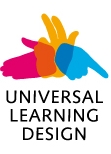The agreement about the uniform computer mathematical notation for blind at Slovenian schools was made in 2006.
For accomplishing this goal a project group was founded. It brought together experts from The Institute for blind and visually impaired children Ljubljana and The Slovenian association of blind and visually impaired. The agenda of the project group was to find a way to allow blind learners and students to access mathematical expressions of all kind by computer.
As the most appropriate linear notation Latex was chosen. Latex is a document description language commonly used especially by the Internet community. The system provides a powerful set of instructions to describe mathematical expressions.
Before the introduction of the computer math notation into schools some adjustments were made.
It was necessary to define some missing characters in the 8-dot code table used by screen readers. The changes were essential only for mathematical notation.
For practical use some simplifications and deviations from Latex syntax were applied. Latex based math notation is therefore designed for all blind learners and students, for all levels of education. In Latex there is possible to create mathematical expressions in several different ways. In order to make the learning easier, as well as for the external exams, it is very important to define one variety all learners and teachers should know.
Some commands in Latex are very long and therefore unsuitable for Braille display. Some are too complex for learners in primary schools. In such cases, the learners and teachers should know and use the simplification, which can partly deviate from Latex syntax. Off course it is all right for learner to follow the correct Latex syntax.
The writing rules simplify the reading on Braille display. They are almost the same as the rules for the 6-dot Braille math notation used with typewriters. The rules ensure the exercises, tests and exams are written the same way regardless of the teacher.
MS Word is commonly used as Latex editor. Macros can speed up writing the math expressions. It is possible to write fractions, roots… quite fast with keyboard shortcuts. There is no need to translate and print expressions in a high quality layout although there is an option for those who are able to use it.
Teachers write math exercises and tests in text editor that is well known to learners. Only Latex commands for math expressions are used and no formatting ones. From this point on teachers can always upgrade the file with formatting commands for the sighted learners.
For those learners who are using 6-dot math notation with Braille typewriter the transition to Latex based notation takes individual approach. The transition process can not be same for all. Learners get support from specialist teacher and from their teacher of mathematics as well.
At the beginning of practicing Latex based notation at Slovenian schools not all blind learners and students have used it. After six years Braille typewriters with 6-dot math notation are used only during first three years of elementary school or for those learners who are not able to use assistive technology. Not only for Braille users, Latex based math notation is suitably for some screen users as well. But according to experience it is rather difficult to use it only with a speech synthesizer.









